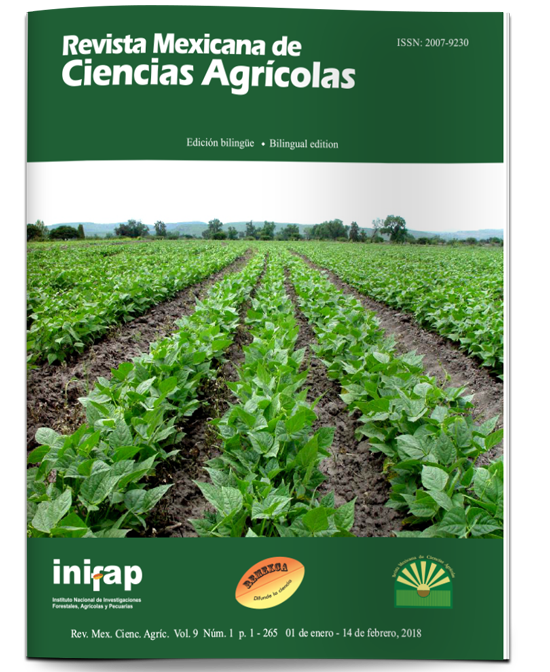Colmena: collection of edaphic microorganisms and native endophytes, to contribute to national food security
DOI:
https://doi.org/10.29312/remexca.v9i1.858Keywords:
agriculture, microbial collections, food security, soilAbstract
COLMENA (www.itson.mx/colmena), is a collection of microorganisms focused on the conservation, classification, characterization, and transfer of native microorganisms isolated from diverse agro-systems, and other habitats. The objective of this collection is to protect the microbial diversity associated with changes in land use, reducing the degradation of soils. So far, soil microorganisms from two important agricultural regions in Mexico have been isolated, the Yaqui Valley, Sonora and the Valley of Fuerte, Sinaloa. Currently, COLMENA conserves approximately 1 446 strains of soil microorganisms associated with various agricultural crops, such as: wheat (448), corn (313), alfalfa (54), broccoli (51), beans (35), among others. Recently, the taxonomic classification of 353 bacterial and fungal strains-through the amplification of the 16S RNAr and 5.8S RNAr genes- has been concluded, noting that the most abundant bacterial genera are Bacillus (27%), Pseudomonas (8%) and Stenotrophomonas. (6%), while the most abundant fungal genera were Aspergillus (8%), Penicillium (3%) and Myrothecium (3%). On the other hand, the metabolic characterization of a fraction of the collection was also carried out, finding that 3% of the microbial collection has the capacity to produce indoles (> 5 mg/L), the solubilization of phosphorus and the production of siderophores it was observed in 36% and 61% of the strains analyzed (396), respectively. Only 3% of the total microbial collection has been identified as producing cellulases and 11% of a total of 258 strains analyzed showed β-hemolysis. These results show the versatility of these microbial strains as potential cost-effective alternatives for agro-industrial practices, focused on contributing to global food security.
Downloads
Downloads
Published
How to Cite
Issue
Section
License
The authors who publish in Revista Mexicana de Ciencias Agrícolas accept the following conditions:
In accordance with copyright laws, Revista Mexicana de Ciencias Agrícolas recognizes and respects the authors’ moral right and ownership of property rights which will be transferred to the journal for dissemination in open access. Invariably, all the authors have to sign a letter of transfer of property rights and of originality of the article to Instituto Nacional de Investigaciones Forestales, Agrícolas y Pecuarias (INIFAP) [National Institute of Forestry, Agricultural and Livestock Research]. The author(s) must pay a fee for the reception of articles before proceeding to editorial review.
All the texts published by Revista Mexicana de Ciencias Agrícolas —with no exception— are distributed under a Creative Commons License Attribution-NonCommercial 4.0 International (CC BY-NC 4.0), which allows third parties to use the publication as long as the work’s authorship and its first publication in this journal are mentioned.
The author(s) can enter into independent and additional contractual agreements for the nonexclusive distribution of the version of the article published in Revista Mexicana de Ciencias Agrícolas (for example include it into an institutional repository or publish it in a book) as long as it is clearly and explicitly indicated that the work was published for the first time in Revista Mexicana de Ciencias Agrícolas.
For all the above, the authors shall send the Letter-transfer of Property Rights for the first publication duly filled in and signed by the author(s). This form must be sent as a PDF file to: revista_atm@yahoo.com.mx; cienciasagricola@inifap.gob.mx; remexca2017@gmail.
This work is licensed under a Creative Commons Attribution-Noncommercial 4.0 International license.



